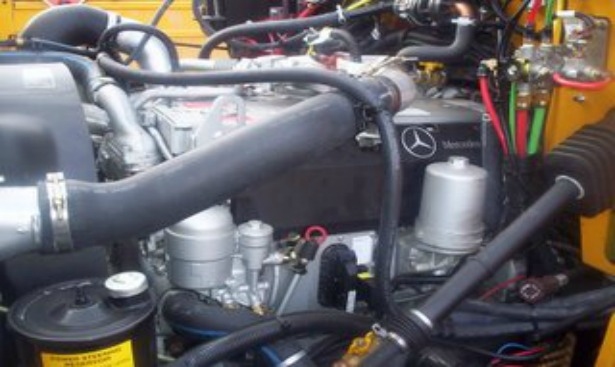Freightliner Conventional School Bus Heating System
The heating system in a conventional Freightliner school bus is very basic like any other design on the road except for a couple of differences. The heater hose are all one inch from the block to the interior running at least 60 feet pressure and return to supply the floor heaters inside.
As with all school buses they come with a coolant boost pump that helps push the fluid through the entire system.
The video describes how the heating system works and where the bleed valve is to get air out of the coolant. This may happen after draining and refilling because of the amount of hose routed through the body.
The ambient temperature outside is around -20 Celsius so maintaining heat for the passengers makes it that much more important to keep the heating system working properly.
OEM Boost Pumps
The boost pumps are OEM parts that come from the factory on delivery. If the boost pump fails it acts as a blockage and coolant flow is restricted to the cab interior hoses. There was a temperature differential before the coolant boost pump and after so I replaced the coolant boost pump.
These pumps do leak occasionally. There is block coolant pressure at the pump inlet so that will add extra stress to the seals.
The coolant boost pump you saw in the video is a new design that obviously has a larger impeller to move more coolant faster. The new international conventional buses we received this year came with coolant pumps as well.
The dealer informed us that if the pump fails the system will run without them. We have not experienced pump failure yet but came across one that was routed backwards so it was working against itself.
Mercedes MBE Diesel – Change Thermostats and Coolant Every 2 Years
The thermostats I was changing in the video are easy to get to with three bolts and two stats to change. This is on a MBE 900 Series Mercedes diesel. The dealer recommends changing thermostats and coolant every two years. This procedure works in well with our major servicing that we do once a year.
Running A Fleet Means Adapting To Cold Weather
Today was -20 Celsius so we worked steady on heater motors, no starts and miscellaneous components not operating normally because of the cold. We carry air brake system antifreeze that is added into the air system wet tank to prevent air door malfunctions and anything else that runs on air pressure.
It’s the typical winter preventive maintenance that every fleet goes through. How cold the weather gets determines the amount of mechanical trouble we run in to.







